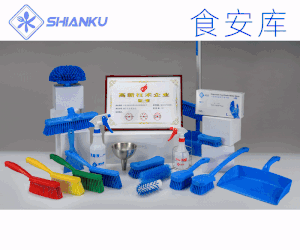食品伙伴網(wǎng)導(dǎo)讀:歐洲食品安全局的FEEDAP小組最近出版了對(duì)生產(chǎn)廠商所提交的飼料添加劑的安全性和有效性的重新評(píng)估的第一意見之一。在先前的規(guī)章制度的基礎(chǔ)上,結(jié)合當(dāng)前的歐盟對(duì)用于動(dòng)物營養(yǎng)的飼料添加劑立法,這個(gè)小組正在評(píng)估目前市場上所有的飼料添加劑。這個(gè)工作的目的是為了確保在歐洲所有的飼料添加劑都遵循相同考慮了最新科技的發(fā)展的指南進(jìn)行再評(píng)估。
原文報(bào)道:
The European Food Safety Authority’s FEEDAP Panel[1] has recently published one of its first opinions on the safety and efficacy of feed additives submitted by manufacturers for re-evaluation. The Panel is re-evaluating all feed additives currently on the market, authorised under the previous regulatory framework[2], and in line with current EU legislation on feed additives[3] for use in animal nutrition. The aim of the work is to ensure that all feed additives in Europe are re-assessed following the same, up-to-date guidelines[4] taking into account the newest scientific developments.
EFSA has already received more than 30 feed additive applications for re-evaluation. In addition, the FEEDAP Panel is continuing to assess new additives submitted for authorisation in the EU, or new uses for additives already authorised. To date EFSA has evaluated more than 200 feed additive applications.
Feed additives are products used to improve animal feed, for example, to enhance flavour, or to make feed more digestible. They include, for instance, preservatives, antioxidants, flavourings and vitamins. There are currently about 2,800 feed additives on the EU market. To maintain these products on the market, the feed industry has to submit applications to the European Commission and EFSA containing the scientific data needed to underpin the re-evaluation of their products. EFSA has also prepared a series of technical guidance documents, following public consultations, to help applicants to prepare the applications.
EFSA’s FEEDAP Panel evaluates the potential impact of feed additives on animal and human health and on the environment. All feed additives containing micro-organisms are also tested for their possible resistance to antibiotics used in human and veterinary medicine.
There are two types of known antimicrobial resistance in micro-organisms; intrinsic and acquired. Intrinsic resistance means that resistance to an antimicrobial forms part of the micro-organism’s own genetic make-up. Whilst this trait can be then passed on to the next generation, the risk of transfer to another micro-organism, plant or animal cell is considered to be negligible. Acquired resistance means that, a micro-organism has, by acquiring external genetic material, become resistant to a certain antimicrobial[5]. Micro-organisms with acquired antimicrobial resistance can potentially spread that resistance to other organisms. If this is the case EFSA would consider this as a potential cause for concern.
The FEEDAP Panel has completed a re-evaluation of the safety and efficacy of Cylactin, a feed additive used in diets for chickens for fattening. Cylactin is a microbial feed additive based on a strain of lactic acid bacteria (Enterococcus faecium), which has had a history of use with both animals and humans. The initial assessment showed that the strain of lactic acid bacteria used in this product is more resistant to kanamycin than most other strains of Enterococcus faecium. Following a thorough review of the data, including the full genome sequence the Panel concluded that the antimicrobial resistance was not acquired; therefore, the risk that the bacteria might transfer kanamycin resistance to other organisms is not a cause for concern.
The Panel concluded that Cylactin is effective as a feed additive used for chickens for fattening and that there is no evidence that its use results in adverse effects for the target animals, human health or the environment.
原文報(bào)道:
The European Food Safety Authority’s FEEDAP Panel[1] has recently published one of its first opinions on the safety and efficacy of feed additives submitted by manufacturers for re-evaluation. The Panel is re-evaluating all feed additives currently on the market, authorised under the previous regulatory framework[2], and in line with current EU legislation on feed additives[3] for use in animal nutrition. The aim of the work is to ensure that all feed additives in Europe are re-assessed following the same, up-to-date guidelines[4] taking into account the newest scientific developments.
EFSA has already received more than 30 feed additive applications for re-evaluation. In addition, the FEEDAP Panel is continuing to assess new additives submitted for authorisation in the EU, or new uses for additives already authorised. To date EFSA has evaluated more than 200 feed additive applications.
Feed additives are products used to improve animal feed, for example, to enhance flavour, or to make feed more digestible. They include, for instance, preservatives, antioxidants, flavourings and vitamins. There are currently about 2,800 feed additives on the EU market. To maintain these products on the market, the feed industry has to submit applications to the European Commission and EFSA containing the scientific data needed to underpin the re-evaluation of their products. EFSA has also prepared a series of technical guidance documents, following public consultations, to help applicants to prepare the applications.
EFSA’s FEEDAP Panel evaluates the potential impact of feed additives on animal and human health and on the environment. All feed additives containing micro-organisms are also tested for their possible resistance to antibiotics used in human and veterinary medicine.
There are two types of known antimicrobial resistance in micro-organisms; intrinsic and acquired. Intrinsic resistance means that resistance to an antimicrobial forms part of the micro-organism’s own genetic make-up. Whilst this trait can be then passed on to the next generation, the risk of transfer to another micro-organism, plant or animal cell is considered to be negligible. Acquired resistance means that, a micro-organism has, by acquiring external genetic material, become resistant to a certain antimicrobial[5]. Micro-organisms with acquired antimicrobial resistance can potentially spread that resistance to other organisms. If this is the case EFSA would consider this as a potential cause for concern.
The FEEDAP Panel has completed a re-evaluation of the safety and efficacy of Cylactin, a feed additive used in diets for chickens for fattening. Cylactin is a microbial feed additive based on a strain of lactic acid bacteria (Enterococcus faecium), which has had a history of use with both animals and humans. The initial assessment showed that the strain of lactic acid bacteria used in this product is more resistant to kanamycin than most other strains of Enterococcus faecium. Following a thorough review of the data, including the full genome sequence the Panel concluded that the antimicrobial resistance was not acquired; therefore, the risk that the bacteria might transfer kanamycin resistance to other organisms is not a cause for concern.
The Panel concluded that Cylactin is effective as a feed additive used for chickens for fattening and that there is no evidence that its use results in adverse effects for the target animals, human health or the environment.











 地區(qū):
地區(qū):






 魯公網(wǎng)安備 37060202000128號(hào)
魯公網(wǎng)安備 37060202000128號(hào)



